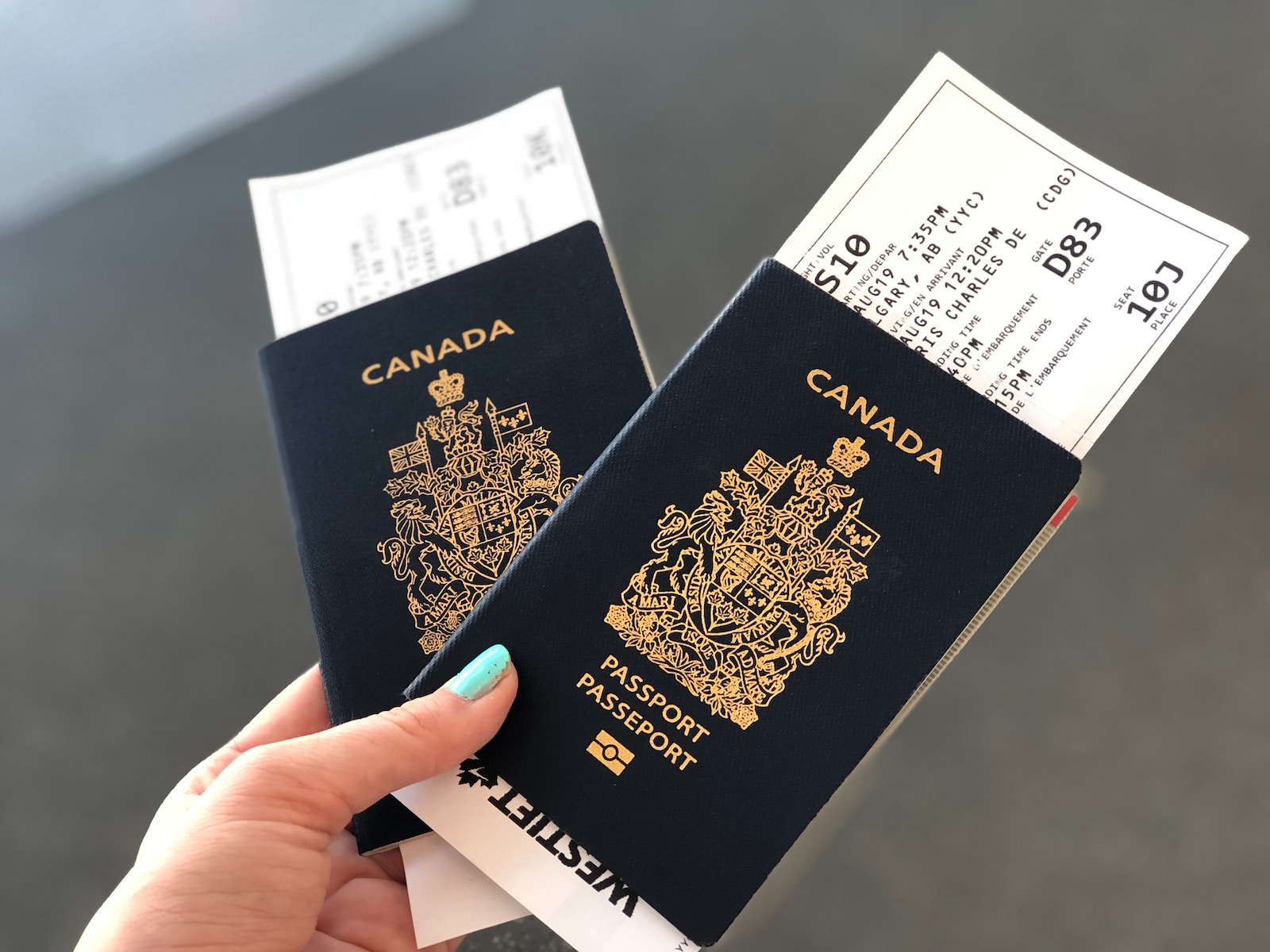U.S. immigration law allows certain noncitizens who are family members of U.S. citizens and lawful permanent residents to become lawful permanent residents (get a Green Card) based on specific family relationships. If you are the spouse, minor child or parent of a U.S. citizen.
Other family members eligible to apply for a Green Card are described in the following family “preference immigrant” categories:
- First preference (F1) – unmarried sons and daughters (21 years of age and older) of U.S. citizens;
- Second preference (F2A) – spouses and children (unmarried and under 21 years of age) of lawful permanent residents;
- Second preference (F2B) – unmarried sons and daughters (21 years of age and older) of lawful permanent residents;
- Third preference (F3) – married sons and daughters of U.S. citizens; and
- Fourth preference (F4) – brothers and sisters of U.S. citizens (if the U.S. citizen is 21 years of age and older).
This page provides specific information for noncitizens in the United States who want to apply for lawful permanent resident status based on a family preference category while in the United States. This is called “adjustment of status.” You should also read the Instructions for Form I-485, Application to Register Permanent Residence or Adjust Status (PDF, 898.98 KB) before you apply.
If you are currently outside the United States, see Consular Processing for information about how to apply for a Green Card as a family preference immigrant.
Eligibility for Adjustment of Status
If you are currently in the United States, you must meet the following requirements to be eligible for a Green Card as a family preference immigrant:
- You properly file Form I-485, Application to Register Permanent Residence or Adjust Status;
- You were inspected and admitted or inspected and paroled into the United States;
- You are physically present in the United States at the time you file your Form I-485
- You are eligible to receive an immigrant visa;
- An immigrant visa is immediately available to you at the time you file your Form I-485 and at the time we make a final decision on your application
- The relationship to the family member who filed Form I-130, Petition for Alien Relative, for you still exists;
- None of the applicable bars to adjustment of status apply to you;
- You are admissible to the United States for lawful permanent residence or eligible for a waiver of inadmissibility or other form of relief; and
- You merit the favorable exercise of our discretion (this means the positive factors in your case outweigh the negative factors).
Inspected and Admitted or Inspected and Paroled
Generally, to be eligible to adjust status, you must be present in the United States after being “inspected and admitted” or “inspected and paroled” by an immigration officer. There are some limited exceptions to this eligibility requirement.
Eligibility to Receive an Immigrant Visa
You are eligible to receive an immigrant visa if you are the beneficiary of:
- An approved Form I-130 filed on your behalf;
- A pending Form I-130 (that is ultimately approved); or
- A Form I-130 (that is ultimately approved) filed together with your Form I-485.
Bars to Adjustment
You may be barred from adjusting status depending on how you entered the United States or if you committed a particular act or violation of immigration law. You are ineligible to apply for adjustment of status if one or more bars to adjustment listed in section 245(c) of the Immigration and Nationality Act (INA) apply to you.
Applying Under INA 245(i)
You may be able to adjust status under INA 245(i) even if you are subject to one or more adjustment bars and are therefore ineligible for adjustment of status under INA 245(a). For more information, see the Instructions for Form I-485 Supplement A, Adjustment of Status Under Section 245(i) (PDF, 281.14 KB)(PDF).
Grounds of Inadmissibility
To qualify for a Green Card, you must be admissible to the United States. Reasons why you may be inadmissible are listed in INA 212(a) and are called grounds of inadmissibility.
In general, we can only approve your Green Card application if none of the grounds of inadmissibility apply to you. As a family preference immigrant, the following ground of inadmissibility does not apply to you:
- Labor certification and qualifications for certain immigrants (INA 212(a)(5))
If you are inadmissible, the law may allow you to apply for a waiver of inadmissibility or other form of relief. For more information, see Form I-601, Application for Waiver of Grounds of Inadmissibility and Form I-212, Application for Permission to Reapply for Admission into the United States after Deportation or Removal. If we grant a waiver or other form of relief is granted, U.S may approve your application for a Green Card if you are otherwise eligible.
Whether a waiver or other form of relief is available depends on the specific inadmissibility ground(s) that applies to you and the category you are adjusting under. Eligibility requirements for waivers and other forms of relief vary.
How to Apply
If you are currently in the United States, an immigrant visa is immediately available to you as a family preference immigrant, and you meet certain other requirements, you may file Form I-485, Application to Register Permanent Residence or Adjust Status, to apply for a Green Card without leaving the country. If a visa is immediately available, you may file your Form I-485:
- Together (“concurrently”) with Form I-130, Petition for Alien Relative filed on your behalf;
- While the Form I-130 is pending; or
- After we approve your Form I-130, as long as your Form I-130 has not been terminated or revoked.
For information on visa availability, see Visa Availability and Priority Dates, Adjustment of Status Filing Charts. You can view the Visa Bulletin on the Department of State’s website.
What to Submit (Principal Applicant)
If you are the named beneficiary of a Form I-130, you are called the principal applicant. As the principal applicant, you should submit the following documentation and evidence to apply for a Green Card as a family preference immigrant who is already in the United States:
- Form I-485, Application to Register Permanent Residence or Adjust Status;
- Copy of the Form I-797, Approval or Receipt Notice, for the Form I-130 petition filed on your behalf (unless you are filing your Form I-485 together with the Form I-130);
- Two passport-style photographs;
- Copy of your government-issued identity document with photograph;
- Copy of your birth certificate;
- Copy of your passport page with nonimmigrant visa (if applicable);
- Copy of your passport page with your admission or parole stamp (issued by a U.S. immigration officer) (if applicable);
- Copy of Form I-94, Arrival/Departure Record, or copy of the U.S. Customs and Border Protection (CBP) admission or parole stamp on the travel document (if applicable). If CBP gave you an electronic Form I-94 upon your arrival/admission to the United States, you may print out a paper version of the Form I-94 from the CBP website;
- Proof that you have continuously maintained a lawful status since arriving in the U.S.;
- Form I-864, Affidavit of Support Under Section 213A of the INA or Form I-864EZ, Affidavit of Support Under Section 213A of the Act;
- Form I-693, Report of Medical Examination and Vaccination Record (you may submit this form together with Form I-485 or later, such as by mail when we request it or in person at your interview, if any);
- Form I-693, Report of Medical Examination and Vaccination Record (you may submit this form together with your Form I-485 or later, such as by mail when we request it or in person at your interview, if any);
- Certified police and court records of criminal charges, arrests, or convictions (if applicable);
- Form I-601, Application for Waiver of Grounds of Inadmissibility (if applicable);
- Form I-212, Application for Permission to Reapply for Admission into the United States After Deportation or Removal (if applicable);
- Documentation of past or present J-1 or J-2 nonimmigrant status (if applicable), including proof of compliance with or a waiver of the 2-year foreign residence requirement under INA 212(e)
- Form I-508, Request for Waiver of Certain Rights, Privileges, Exemptions and Immunities, if you currently hold A, G, or E nonimmigrant status;
- Form I-566, Interagency Record of Request – A, G or NATO Dependent Employment Authorization or Change/Adjustment to/from A, G or NATO Status (only if you have A, G, or NATO nonimmigrant status); and
- Form I-485 Supplement A, Adjustment of Status Under Section 245(i) (if applicable).
Note: Certain forms, including Form I-485, have a filing fee. You must submit the correct filing fee for each form, unless you are exempt or eligible for a fee waiver. Please see our Filing Fees and Fee Schedule webpages for more information.
Family Members
If you are the spouse or unmarried child (under 21 years of age) of a family-based principal applicant, you may apply for a Green Card as a derivative applicant. For more information on derivatives and eligibility for adjustment of status, please see USCIS Policy Manual Volume 7, Part A, Chapter 6, Section C, Subsection C – Derivatives.
Eligibility Criteria for Adjustment as Derivative Applicant
In order to be eligible for a Green Card as a derivative applicant in a family-based preference category, you must meet the following requirements:
- You properly file your Form I-485:
- Together with the principal applicant’s Form I-485 (and the principal applicant’s Form I-485 is ultimately approved);
- While the principal applicant’s Form I-485 is still pending with USCIS (and we ultimately approve their Form I-485);
- After we approve the principal applicant’s Form I-485, if:
- They are still a lawful permanent resident, and
- You were their spouse or child at the time we approved their Form I-485; or
- After the principal applicant obtained an immigrant visa and was admitted into the United States as a lawful permanent resident, as long as:
- They are still a lawful permanent resident, and
- You were their spouse or child at the time they were admitted into the United States;
- You are currently the principal applicant’s spouse or child;
- You were inspected and admitted or inspected and paroled into the United States;
- You are physically present in the United States at the time you file your Form I-485;
- An immigrant visa is immediately available when you file your Form I-485 and when we make a final decision on your application.
- None of the applicable bars to adjustment of status apply to you;
- You are admissible to the United States for lawful permanent residence or eligible for a waiver of inadmissibility or other form of relief; and
- You merit the favorable exercise of our discretion (this means the positive factors in your case outweigh the negative factors.
What Derivative Applicants Should Submit
If you are a derivative applicant (spouse or child), you should submit the following evidence to apply for a Green Card under a family-based preference immigrant category:
- Form I-485, Application to Register Permanent Residence or Adjust Status;
- A copy of documentation showing your relationship to the principal applicant, such as a marriage certificate, birth certificate, or adoption decree;
- A copy of the Form I-797, Approval or Receipt Notice, for the principal applicant’s Form I‑130 (unless you are filing your Form I-485 together with their Form I‑485);
- A copy of the Form I-797, Approval or Receipt Notice, for the principal applicant’s Form I‑485 or a copy of the principal applicant’s Green Card (if not filing together with their Form I-485);
- Two passport-style photographs;
- A copy of your government-issued identity document with photograph;
- A copy of your birth certificate;
- A copy of your passport page with nonimmigrant visa (if applicable);
- A copy of your passport page with admission or parole stamp (issued by a U.S. immigration officer) (if applicable);
- A copy of your Form I-94, Arrival/Departure Record, or copy of the U.S. Customs and Border Protection (CBP) admission or parole stamp on your Travel Document (if applicable). If CBP gave you an electronic Form I-94 upon your arrival/admission to the United States, you may print a paper version of your Form I-94 from the CBP website;
- Proof that you have continuously maintained a lawful status since arrival in the U.S.;
- Form I-864, Affidavit of Support, or I-864EZ, Affidavit of Support Under Section 213A of the Act;
- Form I-693, Report of Medical Examination and Vaccination Record (you may submit this form together with Form I-485 or later, such as by mail when we request it or in person at your interview, if any);
- Certified police and court records of criminal charges, arrests, or convictions (if applicable);
- Form I-601, Application for Waiver of Grounds of Inadmissibility (if applicable);
- Form I-212, Application for Permission to Reapply for Admission into the United States After Deportation or Removal (if applicable);
- Documentation of past or present J-1 or J-2 nonimmigrant status (if applicable), including proof of compliance with or a waiver of the two-year foreign residence requirement under INA 212(e) (for more information, see Form I-612, Application for Waiver of the Foreign Residence Requirement);
- Form I-508, Request for Waiver of Rights, Privileges, Exemptions and Immunities, if you currently hold A, G, or E nonimmigrant status;
- Form I-566, Interagency Record of Request – A, G or NATO Dependent Employment Authorization or Change/Adjustment to/from A, G or NATO Status (only if you have A, G, or NATO nonimmigrant status); and
- Form I-485 Supplement A, Adjustment of Status Under Section 245(i) (if applicable).
Certain forms, including Form I-485, have a filing fee. You must submit the correct filing fee for each form, unless you are exempt or eligible for a fee waiver. Please see our Filing Fees and Fee Schedule for more information.
Employment Authorization and Advance Parole Documents
Generally, when you have a pending Form I-485, you may apply for employment authorization by filing Form I-765, Application for Employment Authorization.
You may also apply for an advance parole document by filing Form I-131, Application for Travel Document. An advance parole document authorizes you to appear at a port of entry to seek parole into the United States after temporary travel abroad. If you need to leave the United State temporarily while your Form I-485 is pending. Generally, if you have a pending Form I-485 and you leave the United States without an advance parole document, we will consider you to have abandoned your application.











